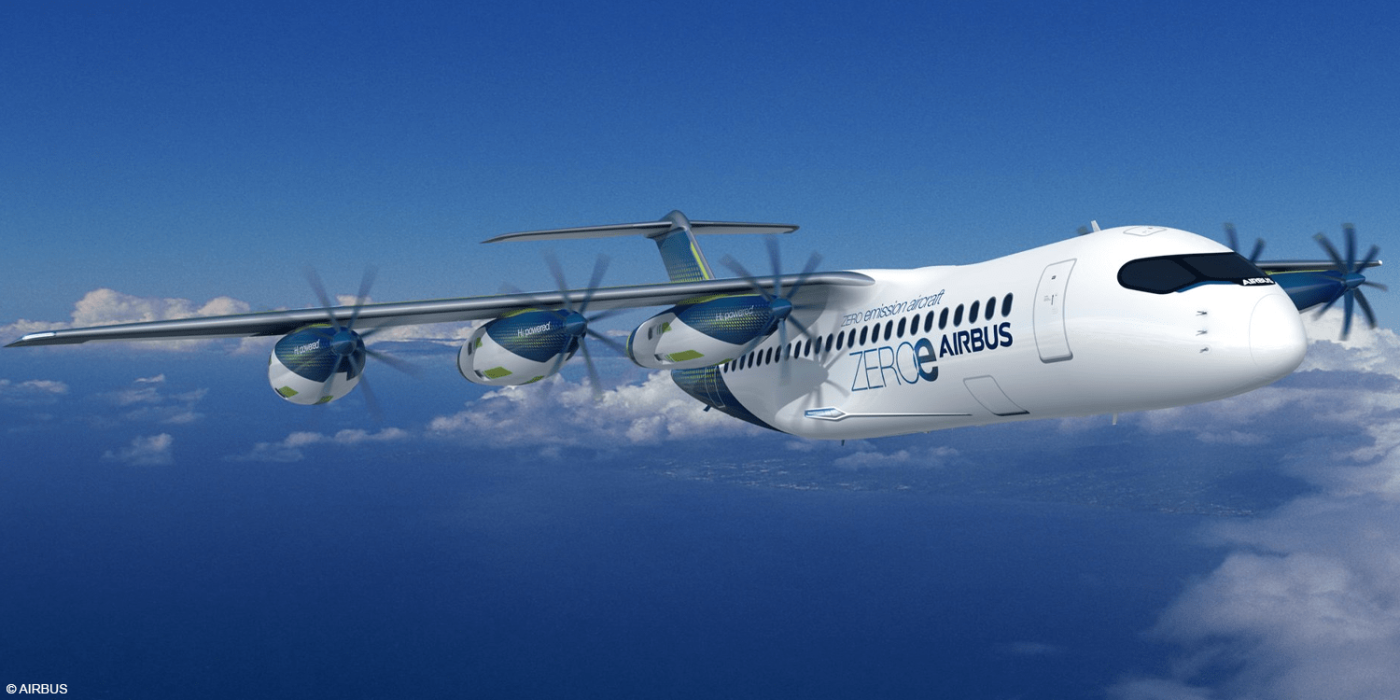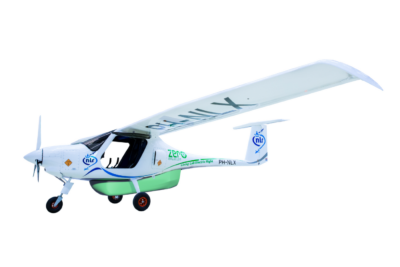Airbus puts first hydrogen-electric propulsion system into operation
The iron pod propulsion system combines a 1.2 megawatt hydrogen fuel cell system, the electric motors and the control and cooling components. As the company has now announced, the iron pod was successfully launched on the test bench for the first time at the end of 2023. The individual components had already been tested (the FC system in June and the 1 MW drive in October), but all components were operated together for the first time at the end of 2023.
“It was a huge moment for us because the architecture and design principles of the system are the same as those that we will see in the final design,” says Mathias Andriamisaina, Head of Testing and Demonstration on the ZEROe project. “The complete power channel was run at 1.2 megawatts, the power we aim to test on our A380 demonstrator.”
Further bench tests in 2024, the first flight test in 2026
The extensive tests of the fuel cell system took place at the E-Aircraft System House (EAS) in Ottobrunn near Munich. It is where the main components of the propulsion system that will be used to power the propellers of the A380 demonstrator are tested. Testing of this first version of the iron pod will continue throughout 2024.
“This process is how we learn what changes need to be made to make the technology flight-worthy,” says Hauke Peer-Luedders, Head of Fuel Cell Propulsion System for ZEROe. “We measure how the propulsion system as a whole works by testing the power needed for several different flight phases, such as takeoff, where we are reaching maximum power levels, and cruising, when we use less power but over a longer period of time.”
After further testing of the propulsion capsule later this year, Airbus says the next step for the ZEROe team will be to optimise the propulsion system’s size, mass and qualifications to meet flight specifications. These qualifications include the system’s response to vibration, humidity and altitude. Once these optimisations and tests have been completed, the fuel cell propulsion system will be installed on the ZEROe multimodal flight test platform. The systems will then be tested on the ground before the crucial phase of flight testing in the A380, currently scheduled for 2026. It is the first A380 ever built by Airbus with the MSN001 designator.
The core of the iron pod, the fuel cell, is a special development. As Airbus states in the press release, fuel cells were already available on the market at the start of the project in 2020. However, none delivered the “energy needed to power an aircraft while remaining at an acceptable weight level.” That is why Airbus founded the Aerostack joint venture with ElringKlinger in October 2020 to develop hydrogen fuel cell stacks that meet the ZEROe requirements.
New development centre in Lower Saxony
In addition to Ottobrunn, work on the ZEROe project will also be carried out at another location in Germany. Airbus has opened a ZEROe Development Centre (ZEDC) for hydrogen technologies in Stade, Lower Saxony. The centre will focus on developing cost-effective, lightweight hydrogen systems such as cryogenic hydrogen tanks. According to Airbus, the centre will cover all areas from technology development and materials research to assembly and production-related testing of composite tanks for liquid hydrogen (LH2).
“Establishing a composite related ZEDC in Germany strengthens our Research & Technology footprint in the country and ensures the involvement, from the start, of leading experts to support our decarbonisation ambition,” says Sabine Klauke, Airbus Chief Technical Officer. “Furthermore, the ZEDC will benefit from the wider composite research and development ecosystem such as the Airbus subsidiary Composite Technology Center (CTC GmbH), the CFK NORD in Stade as well as from further synergies from space and maritime activities.”
The ZEDC in Stade is supported by public funding (e.g. LuFo, Niedersächsische Fördermittel and others) and will be linked to the planned Innovation and Technology Centre Hydrogen (ITZ) in northern Germany to fully exploit the potential of hydrogen technology and contribute to the decarbonisation of the aviation industry.
airbus.com (Iron Pod), airbus.com (ZEDC)





0 Comments